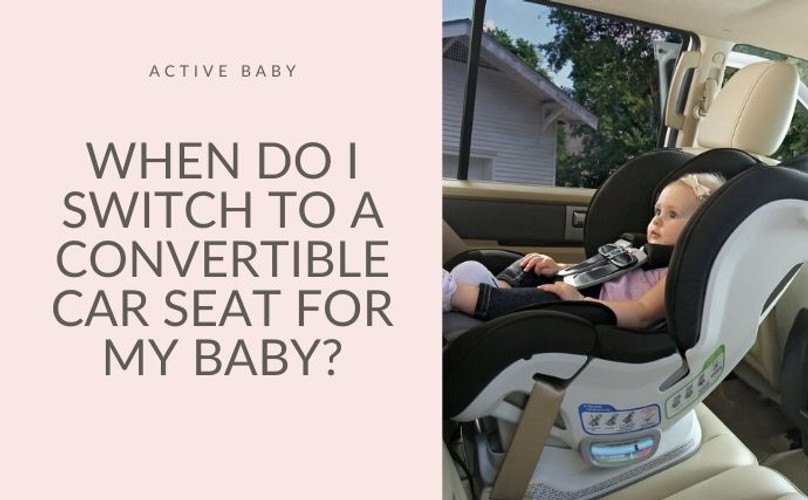When Do I Switch to a Convertible Car Seat for my Baby?
Posted by Active Baby Canadian Baby Store on 2020 Dec 26th
It’s every parent’s nightmare to see their child injured in an accident. Although we do our best to keep them safe, an average of 1,300 children aged 9 and under are injured and 5 killed in car accidents in B.C. every year. According to research, the risk of fatality can be cut by as much as 71% and serious injury by 67% through the correct use of a child safety seat.
A significant part of correct use is knowing when to transition between seat types and positions. To help parents, three styles, or stages, of car seat use have been established, as follows:
- Stage One involves a rear-facing seat so that the child is looking out the rear window. This is the safest position for young children. It provides needed support for their head and neck. Canadian law mandates that this is the position for children from birth to at least 20 lbs, though requirements may be even stricter in individual jurisdictions.
- Stage Two has the child turn to face the front, as with all other passengers. In this position, as with stage one, they require a 5-point harness, and the seat must be secured with a tether strap.
- Stage Three is a booster seat used in conjunction with the car’s own seatbelts.
In B.C., stage one runs from birth until the child is at least one year of age and 9 kg (20 lbs).
Stage two is from 9 kg to at least 18 kg (40 lbs). Stage three covers the child until age 9 or a height of 145 cm (4’9”), whichever comes first.
Many parents start with a lift-out bucket seat, but your child may outgrow it before reaching the minimum requirements for the next stage. In cases such as this, you will want a convertible seat. This type of child car seat can be oriented to face either the front or back, as necessary, allowing you to use it in the required orientation until the requirements are met.
A variety of convertible seats are available, but it is important that while respecting the legal guidelines for your province, you also follow the recommended guidelines of the seat you choose. Here are some popular convertible seats and their weigh capacities:
- Nuna Rava. The Nuna Rava can be used starting at 2.26 kg (5 lbs) with the included car seat, up to 22.67 kg (50 lbs) while installed facing the rear. Upon reaching 50 lbs, the child can face forward and continue using the Rava until they reach 29.5 kg (65 lbs).
- Clek Foonf. Your child may use the Foonf rear-facing from 6.4 kg (14 lbs) to 20.7 kg (45 lbs). The forward-facing position can be used from 10 kg (22 lbs) to 29.5 kg (65 lbs).
- Clek Filo. The Filo can be used in the rear-facing position from 6.4 kg (14 lbs) to 22.67 kg (50 lbs). Forward-facing, it can be used from 10 kg (22 lbs) to 29.5 kg (65 lbs).
- Britax Boulevard. The Boulevard can be used in the rear-facing position from 2.26 kg (5 lbs) to 18.1 kg (40 lbs) and forward-facing from 9 kg (20 lbs) to 29.5 kg (65 lbs).
To provide the greatest safety for your child, it has been suggested that children should transition to a convertible seat by their first birthday. Many children outgrow their child seat by height before they outgrow them by weight, making the convertible seat a safer alternative as it provides greater head protection for toddlers as they grow. Note that the convertible seat will still be installed facing the rear until your child meets the requirements detailed above.
By keeping your child in a properly installed convertible seat and following the proper guidelines on weight limits, you can rest easy knowing that you are helping to keep them safe every time you travel by car.

